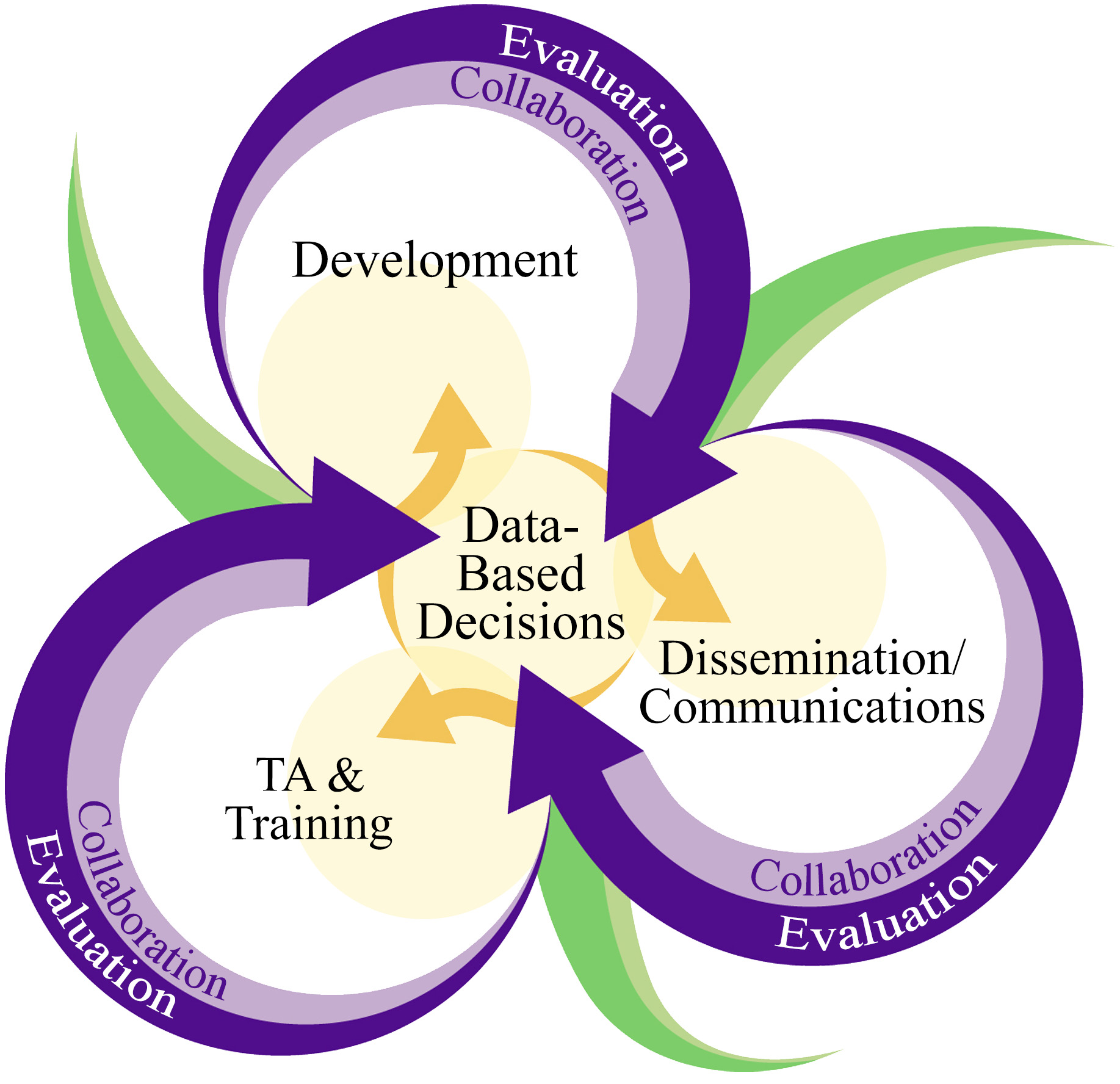The IRIS Center’s Conceptual Framework
The IRIS Center’s conceptual framework is a visual representation of our interrelated initiatives for developing, improving, and disseminating open educational resources (OERs) and supporting materials related to evidence-based practices (EBPs). The purpose of those resources and supporting materials is to achieve the center’s long-term outcome: to increase the ability of practicing educators to use EBPs to improve results for all students, particularly struggling learners and those with disabilities.
Read on to learn more about each initiative.

The development petal represents the comprehensive process through which IRIS OERs are identified and produced. The identification and development of resources related to EBPs occurs through a comprehensive process of needs assessment, production, review, and field-testing to ensure that they are of high quality, useful, and relevant.
The dissemination/communications petal represents the universal delivery of OERs to educators around the world and the subsequent targeted distribution of information about those OERs to increase educator’s awareness and knowledge of EBPs.
The Technical Assistance (TA) & training petal represents the universal services offered to increase the knowledge of practicing educators about EBPs. It also represents the targeted services provided to increase the knowledge of college and university faculty about how to use IRIS OERs to expand the range of EBPs in their course and program curricula. Targeted services are also provided to state education agencies (SEAs), local education agencies (LEAs), and other PD providers about how to use IRIS OERs within in the context of professional development activities to instruct educators in the use of EBPs.
The data-based decision-making core represents our Center’s commitment to using data from each process to make informed decisions about subsequent development, dissemination, and TA and training through ongoing formative feedback loops.
The flower itself is enclosed within two frames or borders:
The collaboration border illustrates the support for development, dissemination, and TA and training through the mutual involvement of IRIS stakeholders (e.g., faculty, PD providers, educators) and entities (e.g., IRIS workgroups, OSEP-funded centers, independent non-profits).
The evaluation border exemplifies the assessment of development, dissemination, and TA and training through a formative and summative process designed to support continuous improvement of resources and services, and provide data on their quality, usefulness, and relevance for faculty, PD providers, and independent learners.